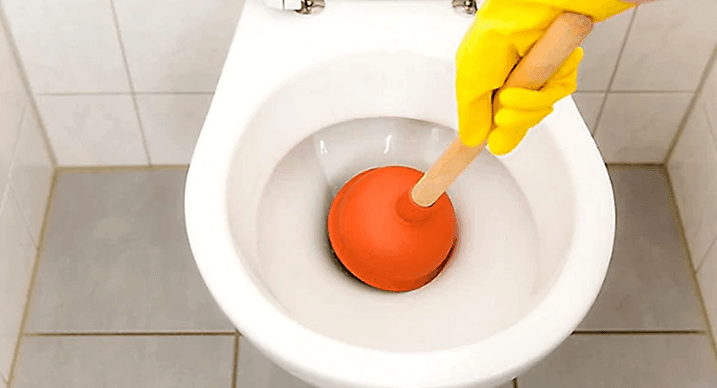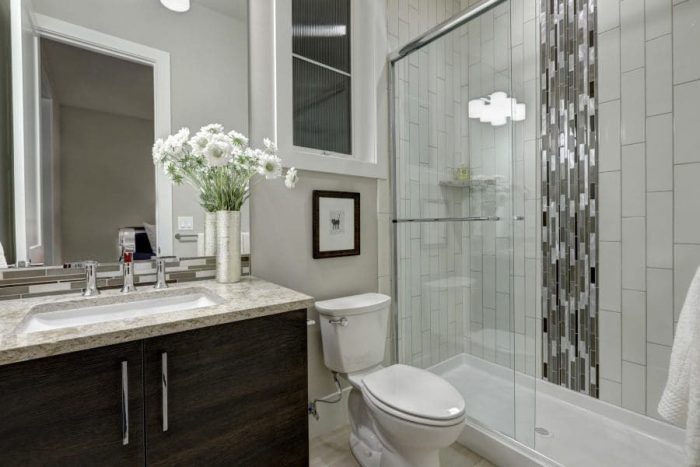If your toilet overflows into the bathtub, you need to act quickly and correctly. The water coming out of the bathtub drain is waste. The best thing you can do about it is remedy it, as the water contaminates microorganisms. To do this, you can use some techniques. Let’s learn how to unclog a toilet that’s backing up into the bathtub.
How to Unclog a Toilet that’s backing up into the Bathtub

Using a plunger
A toilet plunger with an extended flange can work for minor clogs. It helps to get an exact plunger in the jet hole secure fit and the drain hole.
Protect your hands and face using gloves and a mask, and have an extra shirt if you get splashed by toilet water.
The next thing to do is extend the plunger’s rubber flange. Next, place the bell-shaped rubber end over the bottom of the toilet bowl. The rubber end of the plunger should do entirely submerged in water.
The initial push should be gentle, as this helps to release all the air trapped inside the bell. Standing under the gasket may escape and splash you with water from the toilet if you push too hard.
After the initial moderate push, it is time to increase the force used in the dipping motion. Give 15 to 20 thrusts.
Now, try flushing again to determine if it is working correctly or if the water is still backing up in the shower. Hopefully, the plunger has worked, but it indicates you have a more significant clog if it hasn’t.
Unclog slightly larger clogs with a snake.
Use a drain snake. You can find it as “plumber’s snake.” This device helps you to clear large clogs. They come with a long cable with a blade, corkscrew, or hook attached to one end. Now is the end inserted into the toilet and used to snag, cut, and loosen clogs.
Consider purchasing one of these valuable instruments if you don’t already have one; now is a great time to get one. Even if it doesn’t work for you this time, it can help you clear future clogs in smaller drains and toilets.
It is a little more challenging to use than a plunger, and you should be careful when inserting the snake into the toilet. The sharp end can damage the finish on your bathroom or, worse, injure you.
After you insert the tip into the toilet, do this carefully. After that, twist the tool’s handle until you feel resistance. This may be the snake’s tip as it gets closer to the obstruction. Depending on the drill type, you may have to keep turning to clear the blockage or reverse the training to engage it.
Flush the toilet until you see it’s free. Hopefully, there will be no more toilet water or sewage in the shower.
Why is toilet waste overflowing into the bathtub or shower drains?
If used water begins to back up into the shower or bathtub drains, this is a symptom that the sewer main is clogged. Because something impedes the flow of wastewater, it does force it to back up. Because of the elevated position of your toilet, the bathtub or shower’s bottom drain is more prone to having water backup.
The most common reasons for drain and pipe clogging
- FOG; Fats, oils, and grease (FOG). They are present in almost all the causes of clogged drains.
- Hair; the situation worsens when food debris and hairdo add to the mix.
- Mineral-rich abrasive water, such as calcium-rich water limescale, can build up in the pipes over time, causing them to get clogged.
Bottom line
Clogged toilets can cause back-ups in more minor sewage connections, such as connecting your bathroom to your shower.
Clogs in your shower or toilet drains can do caused by soap residue, laundry detergent, or other items. To prevent clogs, keep fats, oils, and grease to a minimum by eating healthy fats like nuts, avocado, and olive oil while lowering your intake of refined oils. The first step in clearing out your sewage may be to turn off the main water valve.
Using a drain snake may be necessary, but do it with caution. You can also try putting a funnel in the drain and pouring in some water to dislodge the clogs. If you’re not sure how to do that, don’t worry! It’s easy. You just need to follow the instructions on the funnel and watch as the water jets out of the end!




